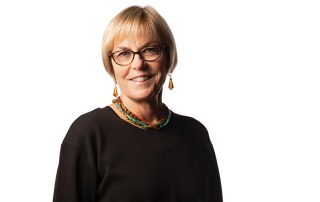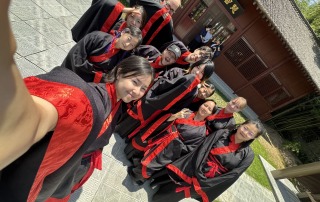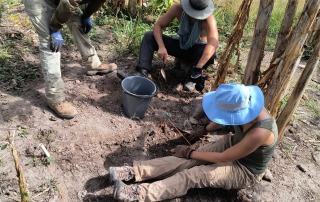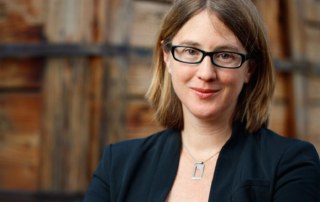Faces of IFR: Career Inspiration from Julie Stein’s SAA Feature
As our 2024 field season begins to comes to a close, many of our students are reflecting on their experiences and looking ahead to the next steps in their academic and professional journeys. To inspire and guide this transition, we're revisiting the insightful "Archiving the Archaeologists" feature on Julie Stein, a distinguished member of our board, published by the Society for American Archaeology (SAA). Julie Stein’s feature was among the first in the SAA series, yet her journey and reflections remain incredibly relevant, especially for those just beginning to chart their own paths in the world of field research. The "Archiving the Archaeologists" series is dedicated to capturing the personal insights and reflections of archaeologists who have made significant [...]
Saying Goodbye to Xi’an
This summer, students from around the world embarked on an extraordinary journey through time and place with IFR’s China: Yangguanzhai Excavation Field School. As we close out a successful field season excavating at Yangguanzhai, we are taking a look back at what has made this program so impactful and memorable through the eyes of the IFR’s 2024 student cohort. Their reflections provide a vivid account of discovery, learning, and cultural immersion, painting a picture of a transformative experience that blends rigorous hands-on learning with rich personal exploration. We can’t forget a fair amount of fun as well! Settling In The Yangguanzhai field school is broken down into two parts, with an initial week of lectures [...]
IFR Student Photo & Video Contest
Do you have a camera roll full of memories from your IFR field school adventures? Whether you've unearthed ancient artifacts, forged unforgettable friendships, or explored breathtaking landscapes (and hopefully all of the above), this is your chance to share those memorable moments with the IFR community, and win some great cash prizes in the process. Here are the details for our summer 2024 contest. PRIZES One winner in each photo category will receive a $150 Visa gift card. The winner of the short video category will receive a $300 Visa gift card. CATEGORIES Cultural Landscapes [photo] Highlight the unique cultural and natural landscapes that shaped your field school experience. Ancient ruins, awe-inspiring landmarks, the [...]
Celebrating Juneteenth through Archaeology & Cultural Heritage
June 19th commemorates the day when 250,000 enslaved people in Texas, the last bastion of slavery during the final days of the Civil War, were declared free. While we honor this significant milestone, we also acknowledge the ongoing journey toward equality and justice within the United States and within the field of archaeology. In the spirit of Juneteenth, we celebrate African American resilience, contributions, and culture through the lens of archaeology and cultural heritage. Here are a selection of resources and ideas to celebrate Juneteenth through this lens as well: Visit an African American Heritage Park From the initial landing of enslaved Africans to sites of civil rights milestones, national parks offer a way to engage with and honor the [...]
Caribbean Field Notes: Summer 2024 Through Student Lenses
This summer, our Western Caribbean field school students embarked on an unforgettable journey to the islands of Providence and Santa Catalina. Through hands-on ethnographic research and community archaeology, they gained invaluable insights into the rich cultural heritage and complex history of the Native Raizal people. The students’ work focused on understanding the islands' historical timeline and documenting the stories, language, and culture of the Raizal community. In their free time they have traveled the length of the island, made deep connections with their local collaborators, and some even decided to get their scuba certifications! As their field school draws to a close, we invite you to look back on the wealth of experiences and memories they have gained this season. [...]
Jay’s spirit lives on through two IFR students
When Jay Garcia passed away in April 2021, his sister Sarah Sanchez decided to channel her grief into something positive. "Instead of withering away and crawling into a dark hole, I decided to take a positive spin on his life and live for him," she shares. Thus began the Live Like JayG3 Scholarship program, a nonprofit organization Sanchez founded in his memory. Inspired by Jay’s spirit of adventure and thirst for continuous learning, this nonprofit seeks to keep his legacy alive by providing scholarships for immersive travel programs, like those offered by the Institute for Field Research. Reflecting on his life, Sanchez describes Jay as "a force of nature," adding, "Jay’s passions were traveling and to never stop learning [...]
IFR Community Shines at 89th Annual Society for American Archaeology Conference in New Orleans
Archaeologists from around the nation (and beyond) converged for the annual Society for American Archaeology (SAA) Conference held from April 17–20, 2024 in New Orleans. Far more than simply a gathering of academics, the SAA Conference serves as a nexus for passionate professionals dedicated to the exploration, interpretation, and preservation of our shared archaeological heritage. Among the many distinguished attendees, the IFR community made a significant impact with its diverse presentations and engaging discussions. Represented by a dynamic mix of staff, board members, field school directors and students alike, IFR made its presence felt at the conference in a big way. From sharing insights on climate and environmental impacts on the historical record to highlighting the use of experimental archaeology [...]
Faces of IFR: Emily Lindsey
As part of our Faces of IFR series, we are delighted to highlight Emily Lindsey, Associate Curator and Excavation Site Director at the La Brea Tar Pits and Museum, and member of IFR’s Academic Board. Her research focuses on using the rich paleontological records from the last Ice Age to better understand how and why ecological shifts occur in response to climatic and human influences. We had the privilege of sitting down with Lindsey to delve deeper into her recent groundbreaking findings, her role in making science accessible at La Brea Tar Pits, and the valuable advice she offers to those eager to follow in her footsteps. Below are some highlights from our conversation. Shedding new light on extinctions of [...]
Salima Ikram featured in Netflix’s hit docuseries ‘Alexander: The Making of a God’
The recently released Netflix docuseries "Alexander: The Making of a God" has captivated audiences worldwide, soaring to second in the Netflix top ten ranking since its January 2024 release. Featured prominently in this project is IFR’s own Salima Ikram, a distinguished archaeologist, author, professor, and prolific media figure whose insights and engaging storytelling brought the enigmatic figure of Alexander to life throughout the six-part series. As part of our ongoing Faces of IFR series, we had a chance to speak to Ikram about Alexander’s timeless appeal, her public engagement work, and reflections from her groundbreaking career. On Alexander’s enduring appeal Reflecting on the success of the Netflix series and the widespread appeal of Alexander’s story, Ikram remarks, “How could Alexander [...]
Jason De León on hanging out, taking risks, and his new book ‘Soliders and Kings’
Anthropologist and IFR board member Jason De León's latest book, Soldiers and Kings: Survival and Hope in the World of Human Smuggling, hit the shelves March 19, marking the culmination of years of meticulous fieldwork spent grappling with the complexities of migration and the human condition. In a recent interview, De León shared insights into his motivations, challenges, and the interdisciplinary approach that informs his groundbreaking work. De León's book delves into the shadowy world of human smuggling, offering a unique perspective on the often-overlooked exp eriences of the guides who navigate migrants across borders. For De León, the decision to explore the lives of smugglers was born out of a desire to tell a different side of the migrant story. [...]










